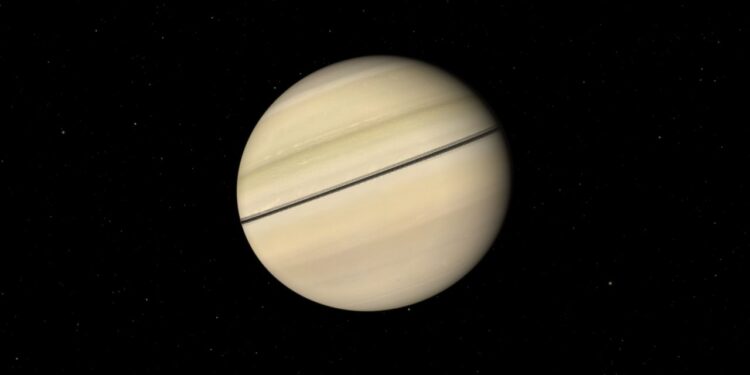
Saturn’s rings will appear to have disappeared if you catch a glimpse of the planet through the eyepiece of a telescope on the night of Nov. 23 — but don’t worry, you’ll be witnessing an illusion! That’s when the iconic debris disk will align edge-on with Earth, therefore hiding from view.
Our view of Saturn‘s rings has shifted dramatically over the years thanks to the lopsided 26.7 degree tilt at which the gas giant orbits the sun. The slow progressions of Earth and Saturn through their orbits dictates whether the majesty of Saturn’s ring structure is laid bare for all to see, or whether it is concealed while presented edge-on — an event astronomers refer to as a “ring plane crossing.”
The last ring plane crossing took place on Mar. 23 earlier this year, at a time when Saturn was positioned close to the sun in the dawn sky and thus lost in our star’s glare. Thankfully, the night of Nov. 23 will see Earth and Saturn’s orbits together make the gas giant‘s iconic rings angled so they appear incredibly thin once again when viewed from Earth — so much so that they will look almost invisible through the scope of a backyard telescope.
Look halfway up the southeastern sky on Nov. 23 to find Saturn shining as a bright “evening star” below the circlet of stars representing the head of the Great Western Fish in the constellation Pisces.
Saturn’s rings will be hidden from sight, though a thin line of shadow may be visible crossing the gas giant’s surface and hinting at their phantom presence. A telescope with an aperture of 4 inches or more will also help reveal the presence of atmospheric details on its roiling cloud surface, along with the presence of its largest moons, including Titan, Enceladus and Rhea.
Stargazers interested in watching Saturn’s rings open up over the coming years should check out our guide to the best telescopes for observing the night sky, along with our roundup of the best astronomy smartphone apps to help you find the gas giant throughout the year.
<em>Editor’s Note: If you would like to share your photos of Saturn with Space.com’s readers, then please send your photo(s), comments, and your name and location to spacephotos@space.com.
